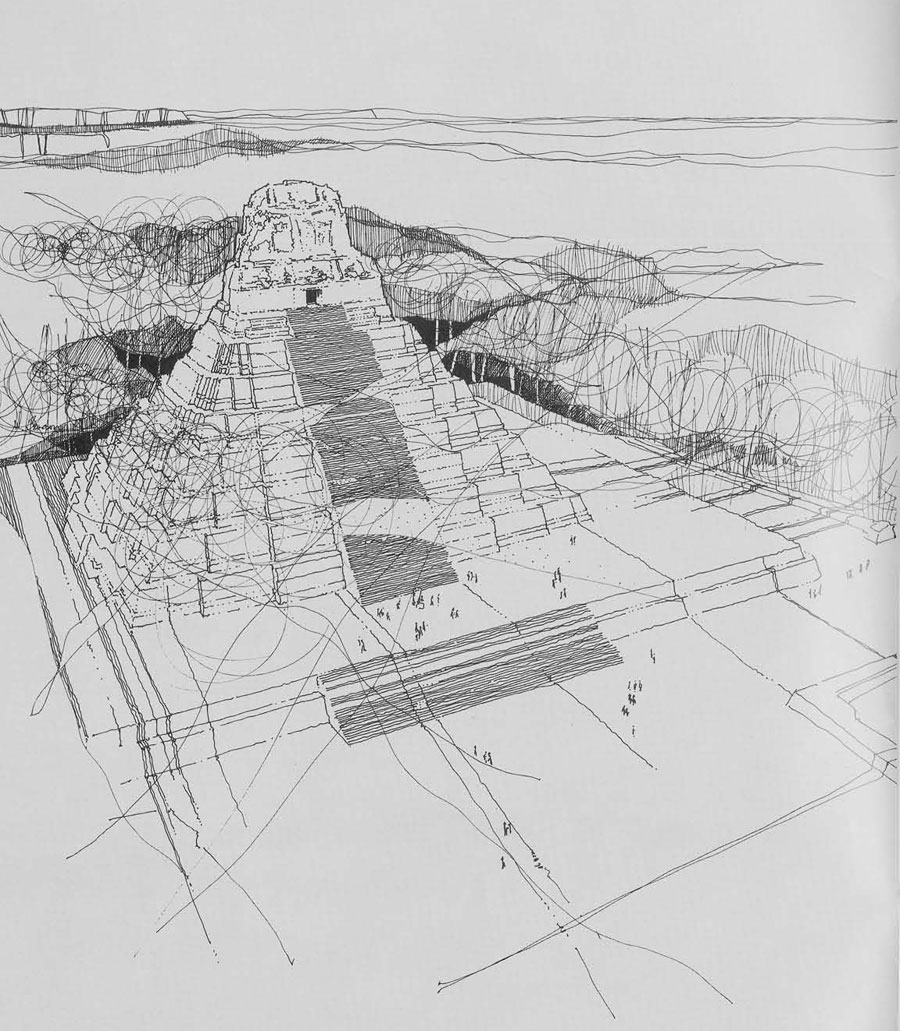
As we approach the final year of extensive archaeological work at Tikal it is quite obvious, as the reader of Dr. Coe’s following article will discover, that there is still a long task ahead. This, of course, is the preparation, editing, and final publication of full reports on the numerous excavations, architecture, sculpture, hieroglyphic texts, ceramics, and the thousands of other artifacts that have been found. Since this will necessarily take several years, it is fitting that this number of Expedition should be devoted to a full-scale summary by the Director of the Project of what has been accomplished. It is a most impressive record of a great deal of hard work by many people, and will have resulted in at least eight Ph.D. theses as well as a vast amount of new information on Maya civilization.
The undertaking of an archaeological campaign of the magnitude of that drawing to a close at Tikal is not to be taken lightly. It has required the raising of nearly a million dollars and the cooperation of the Guatemala Government, both in the tangible form of air transport without cost to the Museum and in the form of enthusiastic help in many ways by the Director and the staff of the Instituto de Antropologia e Historia. Without this support the Project would not have been possible,
Behind such ambitious undertakings there are always one or more individuals with the foresight and confidence to get them started. In the case of the Tikal Project, Percy C. Madeira, Jr. and John Dimick were the two men most responsible for its inception. To them, all of us who have worked for its success are most grateful.
In addition to the support of the Government of Guatemala, the year-to-year expenses of excavation and repair were provided largely by several foundations. We owe a large debt of gratitude to the Avalon Foundation, the National Science Foundation, the Sarah Mellon Scaife Foundation, the Rockefeller Foundation, and the American Philosophical Society for their support. The same is true of the many individuals whose generous contributions have made possible a great deal of work that could not otherwise have been done.
To finish the work of publishing what has been learned at Tikal will require more than the Museum’s normal financial resources. We are hopeful therefore that those who have so generously contributed to the more glamorous task of excavation and discovery will continue to aid us in the less exciting but equally important obligation to make known our results.
Finally, it should be explained that, although excavation on a large scale at Tikal will cease in 1966, the work of repair and conservation of important buildings will continue through 1969. This has been made possible by the Guatemala Government’s appropriation of nearly nine hundred thousand dollars for the purpose of preserving from destruction many of the temples and palaces of Tikal. The result, we hope, will be one of the most interesting and spectacular monuments to the skill and industry of the American Indian.
